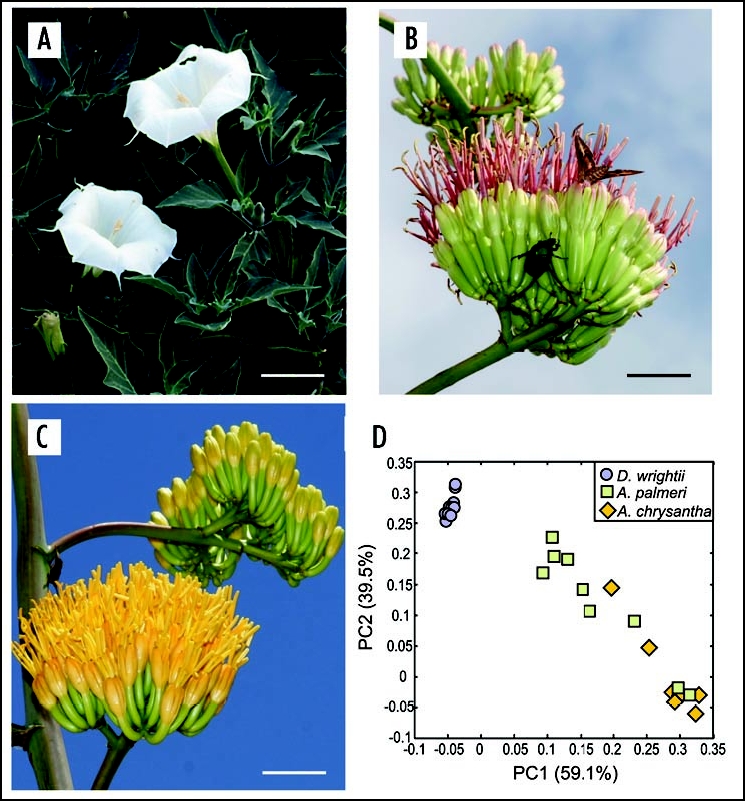Figure 1.

Contrast in floral characterisitics between D. wrightii, A. palmeri and A. chrysantha plants. The three plants are visited by nocturnal hawkmoths, but the floral traits in each plant differ from one another. (A) D. wrightii flowers. Note the bright floral reflectance of the corollas that produces a contrast with the dark foliage background. (B) A. palmeri umbel. Each umbel contains 8–20 flowers. Hyles lineata (Sphingidae), and Cotinus mutabilis (Scarabaeidae), are feeding from the umbel. (C) A. chrysantha umbel. The morphology of A. chrysantha closely resembles that of A. palmeri, but note the bright yellow corollas. (D) Principal-components analysis of the floral odor from these three plants. The D. wrightii flowers (blue circles) group together. In contrast, the agaves appear more variable. The odor of A. palmeri flowers (green squares) appears to more closely resemble that of D. wrightii due to the presence of monoterpenes and benzenoids in its headspace, but some A. palmeri flowers are also grouped in the same PCA space of A. chrysantha (yellow diamonds) due to their aliphatic esters. Scale bar = 5 cm. Picture images courtesy of Charles Hedgecock RBP, FBCA (ARL Division of Neurobiology, University of Arizona) and T. Beth Kinsey.
